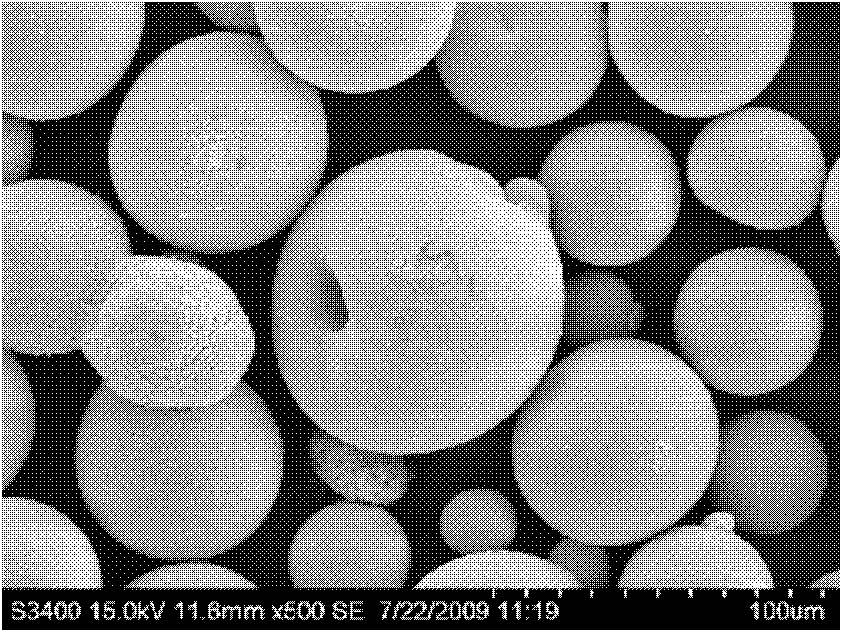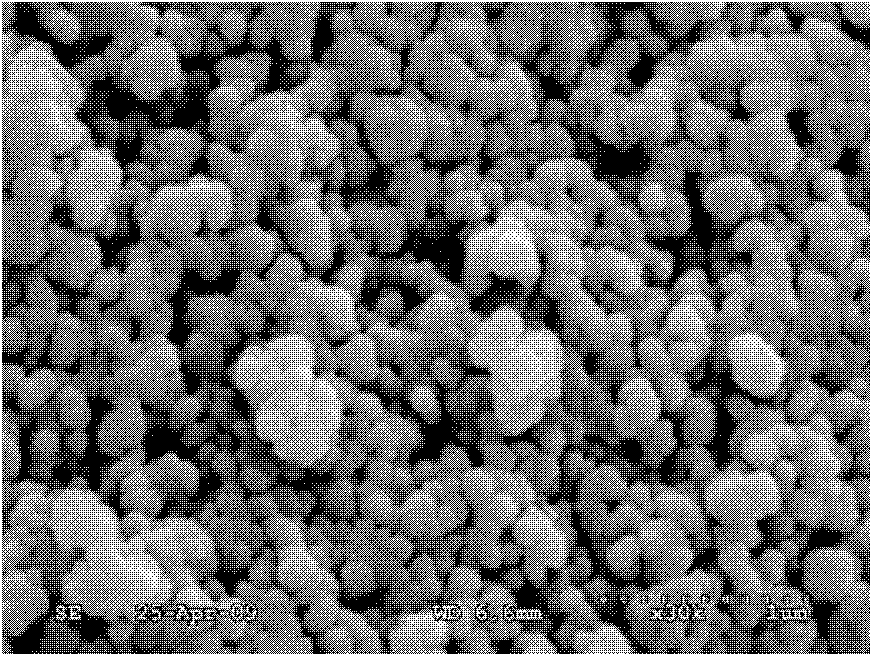Yttria stabilized zirconia powder, its preparation method and formed coating
A technology of zirconia powder and yttrium oxide, which is applied in the field of thermal spraying technology and ceramic materials, can solve the problems of coating quality degradation, coating peeling failure, difficult phase structure transformation, etc.
- Summary
- Abstract
- Description
- Claims
- Application Information
AI Technical Summary
Problems solved by technology
Method used
Image
Examples
preparation example Construction
[0039] The preparation method of the yttria-stabilized zirconia powder of the present invention may comprise:
[0040] Step 1: Choose continuous co-precipitation method or other chemical synthesis methods to obtain YPSZ powder wet material (the precursor has been reacted or precipitated). At this time, the selected YPSZ nano powder wet material has been washed many times, and the powder purity reaches 99.9%. The density is 10~80nm, Y in the powder 2 o 3 The content is 6-8wt.%. At this time, the powder has not been calcined at a high temperature and remains amorphous; in addition, the content of Na, K, Ca, Mg, Al, Si, Ti, Fe and other elemental impurities in the original powder is controlled to be lower than 100ppm;
[0041] Step 2: Dry the obtained wet material quickly at low temperature, the drying temperature is controlled at 100-400 ° C, and the drying time is controlled at 1-3 hours; at this time, a part of the nano-YPSZ powder mixed with crystalline and amorphous states...
Embodiment 1
[0051] Amorphous (non-crystalline) nanoparticles synthesized by continuous co-precipitation method form a slurry, the composition of which is 7YSZ, in which the content of different impurities is lower than 100ppm, and the purity is greater than 99.9%; use high-purity water to adjust the solid content of the slurry to 50 %, use a stirring ball mill to mill for 2 hours, and after the dispersion is uniform, the slurry is granulated using a centrifugal spray drying equipment. Dry at 150°C for 1 hour, sieve the powder to 53-90 μm, and calcine the powder. The calcination temperature is 800°C, the holding time is 24 hours, and the heating rate is 1°C / min. The grain size is 36nm. After calcination, the powder is sieved again. The sieving particle size ranges from 45 to 75 μm. The calcination powder is subjected to plasma densification treatment, using DC plasma spraying equipment, using high-purity water as the water quenching medium, and the plasma densification power It is 18KW, an...
Embodiment 2
[0055] Amorphous (non-crystalline) nanoparticles synthesized by continuous co-precipitation method constitute slurry, wherein YSZ material Y 2 o 3 The content is 6.83%, and the content of each impurity is lower than 100ppm. Use high-purity water to adjust the solid content of the slurry to 45%, and use a stirring ball mill to mill for 2 hours. After the slurry is evenly dispersed, use a centrifugal spray drying equipment for granulation treatment. The main parameters are as follows: The inlet temperature is 250°C, the outlet temperature is 120°C, and the rotation speed of the atomizing disc is 9000rpm. The collected granulated material is sieved to a powder size of 60-115μm, and the powder is calcined. The calcining temperature is 1100°C, the holding time is 12h, and the heating rate is The average single crystal size of the nanoparticles in the spherical powder after calcination is 2°C / min. The average single crystal size of the nanoparticles in the spherical powder after cal...
PUM
| Property | Measurement | Unit |
|---|---|---|
| Granularity | aaaaa | aaaaa |
Abstract
Description
Claims
Application Information
 Login to View More
Login to View More - R&D
- Intellectual Property
- Life Sciences
- Materials
- Tech Scout
- Unparalleled Data Quality
- Higher Quality Content
- 60% Fewer Hallucinations
Browse by: Latest US Patents, China's latest patents, Technical Efficacy Thesaurus, Application Domain, Technology Topic, Popular Technical Reports.
© 2025 PatSnap. All rights reserved.Legal|Privacy policy|Modern Slavery Act Transparency Statement|Sitemap|About US| Contact US: help@patsnap.com



